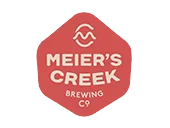Making beer is a fulfilling experience. Finding new hops that you love, pouring the perfect pint, and hearing a customer say your brew is their new favorite—unmatched. But, as with any business, you’ll also need to manage the less thrilling aspects of running a successful brewery. While comprehensive beverage software can help streamline operations, a critical compliance requirement is the Brewer’s Report of Operations (BROP), which is key to staying compliant with Alcohol and Tobacco Tax and Trade Bureau (TTB) requirements.
The BROP tracks alcohol you’ve produced, sold, lost, and received in the reporting time frame. Depending on your production and sales volume, you may need to file this report either monthly or quarterly. The TTB requires all breweries to submit the form within the time frame for which they’re eligible to remain in good standing and avoid fines.
That sounds complex. With the right background and TTB reporting software in place, it can become a routine operation. This guide helps you get there.
Here’s a quick look at what we’ll cover:
- TTB quarterly brewer’s report requirements and deadlines
- Key differences between monthly and quarterly reporting
- Essential information needed for BROP preparation
- Step-by-step form completion guidance
- Common filing mistakes to avoid
- How brewery software streamlines compliance
Let’s start with understanding exactly what this report entails and why it matters for your brewery.
What is the Brewer’s Report of Operations?
At its core, the Brewer’s Report of Operations is a comprehensive report that keeps the TTB informed about the operations of your brewery or brewpub. It focuses on your beer inventory at the beginning and end of the reporting period along with production and transfer numbers to give authorities the full picture of your operations.
BROP Filing Requirements
The quarterly brewer’s report of operations requires careful attention to detail and accurate record-keeping. Breweries must track all production, transfers, and losses throughout the quarter to ensure accurate reporting. Many breweries find that specialized brewery software or beverage ERP systems help maintain the necessary documentation.
While tracking these quarterly reporting requirements may seem daunting at first, understanding the BROP’s fundamental purpose and components will help streamline your compliance process.
Monthly vs. Quarterly: Understanding BROP Requirements
One of the first steps brewers need to take is determining whether they need to submit the BROP monthly or quarterly. The difference lies in how many taxes your brewery has to pay:
- If your brewery was responsible for less than $50,000 in taxes last year and don’t expect to pay more than that this year, you only need to submit the form quarterly. In this case, complete Form 5130.26.
- If your brewery paid more than $50,000 in taxes last year and expects to maintain or increase that amount this year, complete the monthly Form 5130.9.
Both of these forms are similar. The monthly report is more in-depth, including nuances on cellar, racking, and bottling inventory and distinguishing between bulk, keg, and case inventory. The quarterly report is simpler, focusing on additions to and removals from your beer inventory by the nearest barrel.
Preparing for the Brewer’s Report of Operations
The BROP is relatively complex, especially considering the fact that few brewers went into this business for the love of spreadsheets. You can simplify the reporting by spending enough time preparing, which allows you to speed up the actual report completion by getting all information in place beforehand. As you prepare to fill out the BROP, you will need to have this information on hand:
- Your Business EIN number
- Your Brewery Registry number
- The name and address of your brewery, exactly as it appears on your Brewer’s Notice
- A copy of the completed BROP you submitted for the previous month or quarter
- Supporting documentation that provides sufficient support for the amounts reported on the form
Over time, the report will become increasingly familiar, which makes some of this information less tedious. Modern distillery management software and brewery management platforms can automatically track and compile much of this information. With proper keg tracking systems in place, you can easily monitor beer movement and inventory changes. Whether you’re using cider production software or comprehensive beverage distribution software, the key is maintaining accurate, real-time data.
Completing the BROP Form
If you’ve prepped well, the form itself becomes more straightforward. We recommend working up to these numbers as you brew—keep track of your losses, production, inventory, and other elements relevant to your BROP as you work through the month or quarter.
While TTB reporting software can automate much of this process, it’s still important to understand what information needs to be included in your quarterly brewer’s report of operations. This ensures you can verify the accuracy of automated reports and make any necessary adjustments.
Related: Take The Next Step in Brewery Record-Keeping
Check each line of the Brewer’s Report of Operations to know exactly what numbers to pull. The categories will differ slightly for each form, so a close eye on what exactly the TTB needs is vital. Some additional resources to help you understand the form include:
- This TTB Boot Camp webinar series from the TTB site.
- This color-coded form tells you which lines should match (via TTB) and offers helpful hints for filling out the form.
As it becomes more routine, keep these resources available as needed for anyone who has to help pull numbers or complete the report.
Common BROP Filing Mistakes to Avoid
When submitting your quarterly brewer’s report of operations, attention to detail is crucial. Here are critical errors to avoid:
- Mismatched beginning/ending inventory numbers between reporting periods
- Incorrect tax determination calculations
- Failing to document and report all losses during production
- Inconsistent unit measurements across reporting sections
- Missing or incomplete supporting documentation
- Late submissions due to inadequate preparation time
Brewery software and beverage ERP systems can help prevent these issues by automating calculations, maintaining consistent records, and flagging potential discrepancies before submission.
Sending Your BROP to the TTB
Don’t wait until the last minute to file your report. No matter how frequently you plan to submit, your form must be received by the end of the 15th day following the end of the reporting period. For example, if you submit your quarterly report for the months of January through March, the TTB has to receive it by April 15.
You can complete the form online via the TTB website once you create your brewery’s account. Alternatively, you can also complete it in paper form and mail it directly to the TTB’s National Revenue Center in Cincinnati.
TTB Reporting Requirements Beyond the Brewer’s Report of Operations
The BROP is a central piece of the reporting puzzle for breweries, but it’s not the only component. The TTB also requires you to maintain accurate and organized records of production, distribution, and inventory, all of which may be subject to inspection at any time.
Keeping thorough and up-to-date records of these variables is essential for remaining in compliance and avoiding fines—and a comprehensive platform streamlines the ability to produce your BROP with just a few clicks. It also helps in scenarios where the TTB requests additional documentation or supporting records related to the information provided in the Brewer’s Report of Operations, including anything from production logs to sales invoices, shipping records, and purchase receipts to support the information in the submitted report.
Related: 5 Reasons Your Brewery Accounting Team Will Love Using Ekos
Finally, your state may have additional reporting requirements for breweries. Familiarize yourself with all necessary reporting requirements—both state and federal—to build the necessary systems for tracking relevant information.
Take Advantage of Technology for Brewery BROP and Other Reporting Requirements
Pulling information manually to remain in compliance can be complex and takes up a significant amount of time that you could otherwise spend running and growing your brewery business. Fortunately, the right technology enables you to pre-generate brewery operations reports like the Brewer’s Report of Operations.
Whether you’re running a brewery, cidery, or distillery, having the right beverage ERP system in place can transform your TTB reporting process from a time-consuming burden into a streamlined operation. The key is choosing comprehensive brewery software that integrates all aspects of your operation, from production to compliance.
Find the right system, and you can allow it to do the heavy lifting for all of your reporting and documentation needs. This will streamline the process, improve accuracy, and save hours, allowing you to do what you do best as you brew and sell great beer.
Ekos provides comprehensive brewery management software that integrates all your operations data into a single source of truth. Our pre-built TTB reports and automated tracking capabilities save breweries hours per month on compliance and reporting tasks. Ready to streamline your TTB reporting process? Book a demo today to see how Ekos can transform your brewery operations.
—
DISCLAIMERS: This material has been prepared for informational purposes only, and is not intended to provide, and should not be relied on for, tax, legal, or accounting advice. You should consult your own tax, legal, and accounting advisors before engaging in any transaction. Furthermore, the information provided on the Ekos-generated Brewer’s Report of Operations is generated using data within Ekos and is our understanding of what should be provided. Please consult a tax representative or the TTB directly for specifics.





